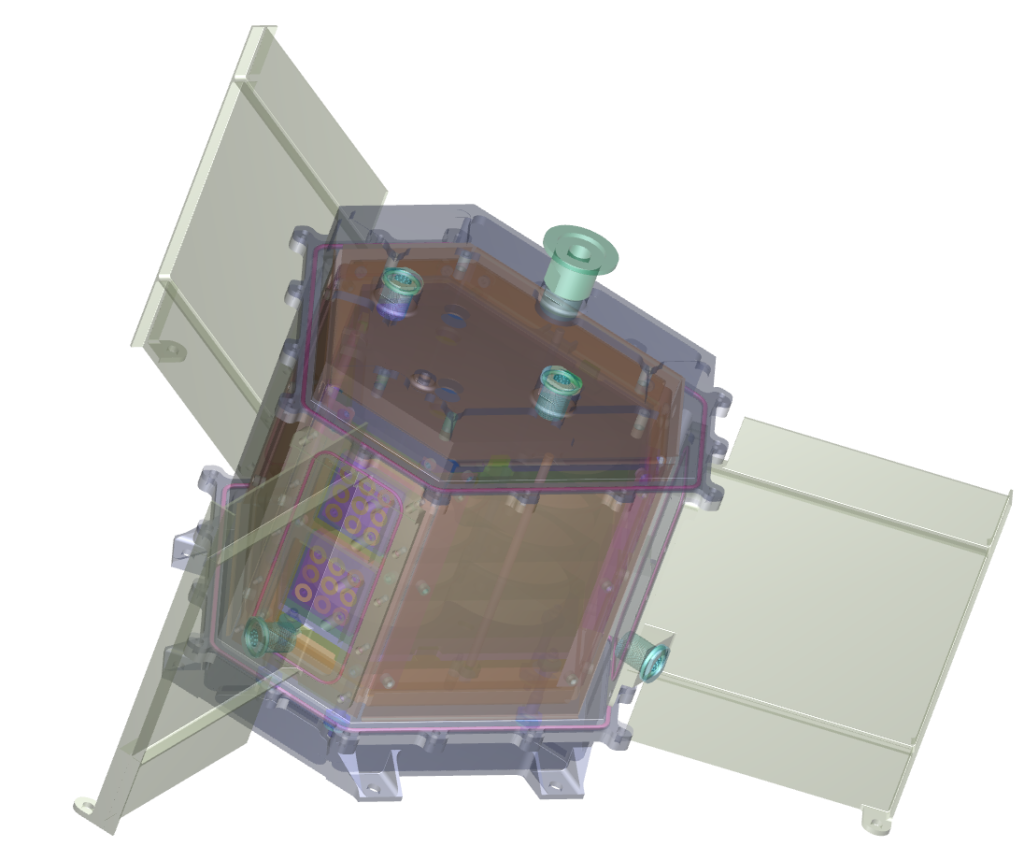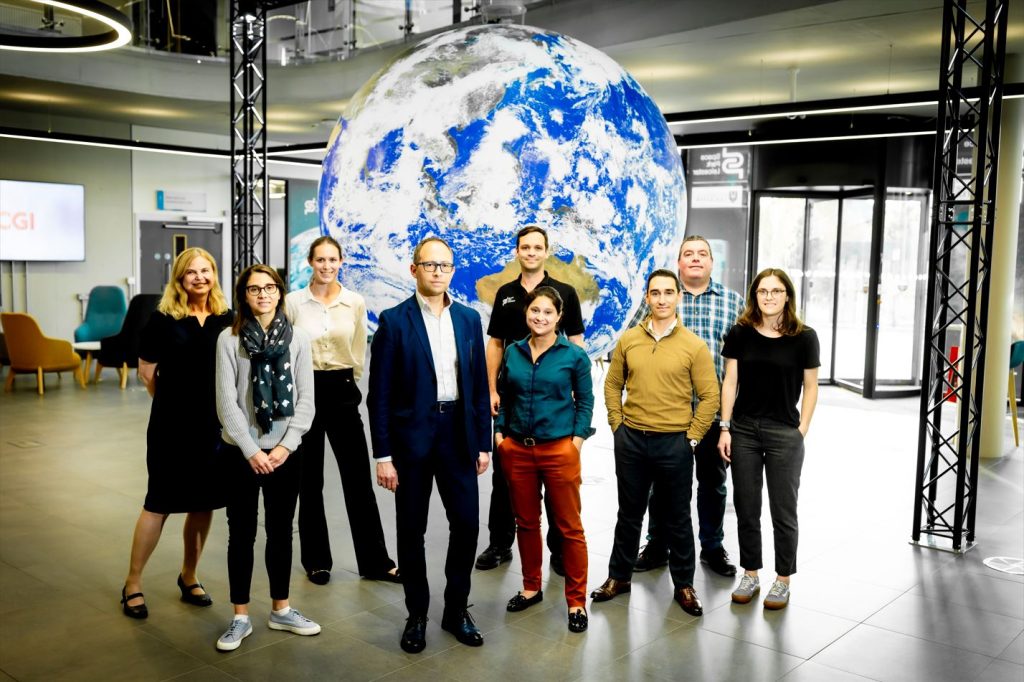Over £2 million funding enables international collaboration for space research at University of Leicester

Two research groups from the University of Leicester have been boosted by support from the UK Space Agency to develop new technologies to power future space missions and to monitor carbon dioxide levels by satellite.
Projects that showcase the best of UK space expertise on the international stage have secured a funding boost from the UK Space Agency, as the global space industry lands in Colorado Springs for the 39th Space Symposium on Monday 8 April.
More than £2 million funding has been awarded to two groups based at Space Park Leicester, the University of Leicester’s pioneering £100 million science and innovation park, from the UK Space Agency’s International Bilateral Fund, focused on supporting the UK space sector to work directly with international partners on exciting and innovative projects. The funding will enable both groups to establish and develop partnerships with organisations internationally to further their cutting-edge work into radioactive power systems and earth observation technology.
The Space Nuclear Power group at the University of Leicester have been developing radioisotope power systems for over a decade. These power systems use the heat generated from the decay of radioisotopes, and can be used to provide heat to spacecraft or converted to electricity to power key subsystems. The technology development has been funded by the European Space Agency (ESA) European Devices Using Radioisotope Energy (ENDURE) program, which has been heavily supported by the UK Space Agency.
The key difference between the radioisotope power system technology being developed in Leicester compared to similar products around the world is that it uses americium fuel instead of plutonium. The americium fuel gives the power systems different properties. For example, americium-241 has a half-life of more than 400 years, which means it can provide stable power outputs to spacecraft for many decades. Meanwhile, the Radioisotope Thermoelectric Generators (RTGs) that use americium perform better in cold environments which makes them suitable for missions targeting icy moons or shadowed regions of planetary surfaces.

Over £783,000 from the International Bilateral Fund will be used to advance mission concepts and use-cases to demonstrate the breadth of the technology applications. Working with collaborating institutes and entities in the US, Japan, and Europe, the team aims to maximise the benefits that these technologies can provide to scientific and exploration missions.
Project lead Dr Hannah Sargeant from the University’s School of Physics and Astronomy said: “The radioisotope power technology that has been developed at the University of Leicester, in conjunction with National Nuclear Laboratory, is performing extremely well in our ongoing testing campaigns. In this project, we will be working with a number of international partners to establish mission opportunities that would only be possible with the continuous and reliable power on offer. We’re excited to receive this grant from the UK Space Agency to help us build key relationships with international partners.
“The first phase of funding was used to work with our international partners to understand their power needs and mission priorities. In Phase 2, we will be conducting both laboratory and concept studies to demonstrate the feasibility of the mission concepts. It will also provide an opportunity to highlight the technology to the civil and commercial space industry and show how it could be used to meet critical power needs for priority missions.”
The School of Physics and Astronomy’s Earth Observation Science (EOS) Group and Space Projects and Instrumentation Group are leading a new international project at Space Park Leicester focused on high resolution quantification of CO2 emissions from new satellite instrumentation, with international partner Bahrain National Space Science Agency (NSSA), and UK SME partner Geospatial Insight, Ltd., (GSI) and the Industry and Energy Division, YBA Kanoo Group (Bahrain) as an industrial collaborator.
The £1.3 million project funded by the UK Space Agency will strengthen partnership and collaboration between UK and Bahrain. Building on the University of Leicester’s and Space Park Leicester’s track record in space technology, it will demonstrate novel technology while building the case for future mission investment.
Dr Joshua Vande Hey, Head of the EOS Group and overall project lead said: “This international bilateral funding from UK Space Agency enabled us to strengthen critical partnerships with the excellent NSSA team in Bahrain and with innovative local partner GSI in the first phase and move on ambitious technological and commercial development in the current phase. This exciting work to develop new technology for monitoring CO2 emissions from agile satellite platforms and realise deployment through new business models is an excellent example of the kind of collaborative work Space Park Leicester is enabling. We see this as the first step towards filling critical data gaps and improving understanding of progress towards net zero targets.”
Dr Mohamed Al Aseeri, NSSA CEO added: “Following the exceptional work conducted in Phase 1, the Kingdom of Bahrain’s National Space Science Agency (NSSA) is pleased to collaborate with the University of Leicester (UoL) as a supporting International Partner for Phase 2 of the UK Space Agency’s (UKSA) International Bilateral Fund (IBF). NSSA is the central agency responsible for civil space activities in the Kingdom of Bahrain, and we see this as a great opportunity for collaboration to help strengthen our partnership with the United Kingdom in the field of space and showcase Bahrain’s commitment to accelerating the development of a civil space sector as a means of addressing sustainable economic development and the transition of economies to NetZero.”
Ms. Rasha Al Amad, Chief Strategic Planning at NSSA, added: “The project aims to address a challenge we face in securing data necessary for monitoring our industries, potentially to support our neighbouring countries, and determine compliance with policies that support international commitments to reducing greenhouse gas emissions by developing and qualifying a CO2 sensor on a small satellite platform. We believe that working alongside experts from the University of Leicester and GSI is an excellent opportunity for knowledge sharing, serving the national and regions’ needs and further strengthens the international partnership and collaboration in the space sector.”
Dr Stephen Wright, METEOR Programme Manager at Space Park Leicester, added: “The METEOR programme began working with the NSSA just over a year ago with strategic development workshops in the NSSA offices in Bahrain, and in the UK at Space Park Leicester, and the Harwell campus. Follow-on workshops were completed last month in Bahrain to facilitate commencement of the delivery of direct local impact, with plans for more later this year. Securing the Bilateral funding from the UK Space Agency is a logical extension, allowing us to collaboratively deliver practical research and economic development aligned with the opportunities identified.”
This is the second phase of investment awarded through the UK Space Agency’s International Bilateral Fund, following the first phase in August 2023. Phase 1 funded 32 projects up to £75,000 each, all of whom entered into highly competitive process for further funding from Phase 2.
Dr Paul Bate, Chief Executive of the UK Space Agency, said: “We want to draw on the best global talent to push the boundaries of new technology such as AI and space nuclear power, enhance our homegrown space capabilities and catalyse investment into the UK economy.
“The projects supported by our International Bilateral Fund champion the best of British innovation, while strengthening our ties with the wider space community. Together we can break new ground, further our understanding of the Universe and use the vast power of space to protect and benefit lives on Earth.”
At the start of the year, University of Leicester scientists also received funding from the UK Space Agency’s Space Science and Exploration Bilateral Programme to deliver (with other UK and Spanish collaborators) a Raman spectroscopy instrument for commercial lunar rover and lander missions investigating minerals on the Moon, helping us to understand whether this is a resource that could be used for longer term lunar exploration.
- Find out more about the University of Leicester


